- Why grow Godezia seedlings
- Benefits of starting from seeds
- Choosing the Right Seeds for Godezia Seedlings
- 1. Varieties and Colors
- 2. Germination Rate
- 3. Supplier Reputation
- 4. Organic or Hybrid Seeds
- 5. Seedling Characteristics
- 6. Climate Adaptability
- Selecting a Godezia Seed Variety
- Quality and Germination Rates
- Factors affecting germination rates
- Testing germination rates
- Conclusion
- Preparing the Soil for Godezia Seedlings
- 1. Choose a suitable location:
- 2. Clear the area:
- 3. Test the soil:
- 4. Prepare the soil:
- 5. Amend the soil:
- 6. Fertilize:
- 7. Mulch:
- 8. Water the soil:
- Soil conditions for optimal growth
- Testing and amending the soil
- Soil testing
- Amending the soil
- Sowing Godezia Seeds
- Best time to sow Godezia seeds
- Questions and Answers:
- When is the best time to sow godezia seeds?
- How should I prepare the soil for sowing godezia seeds?
- Can I sow godezia seeds directly in the garden?
- How deep should I sow the godezia seeds?
- How long does it take for godezia seedlings to germinate?
- When can I transplant the godezia seedlings into the garden?
- Videos: How To Grow Flower Seeds Fast (With Update)
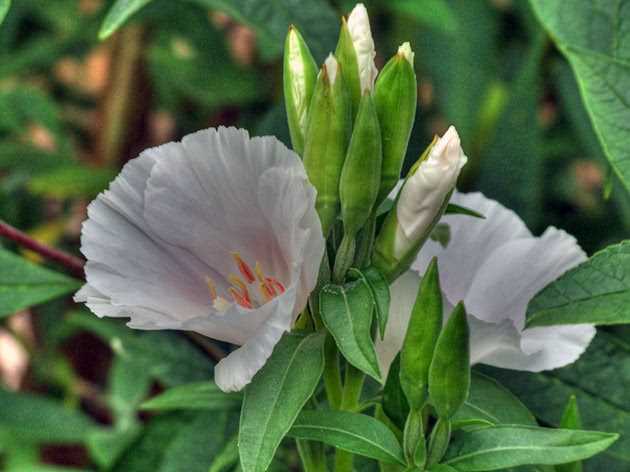
Are you interested in growing godetia seedlings in your garden? This article will guide you through the process of sowing and transplanting these beautiful flowers. Godetia, also known as farewell-to-spring, is an annual flower that produces vibrant blooms in a variety of colors. By following these simple steps, you can enjoy a garden filled with godetia that will brighten up your outdoor space.
Sowing Godetia Seeds
To start growing godetia seedlings, you will first need to sow the seeds. Begin by choosing a sunny location with well-draining soil for your godetia plants. Prepare the soil by loosening it with a garden fork or shovel, and remove any weeds or debris.
Next, sprinkle the godetia seeds evenly over the soil surface. The seeds are very small, so you may find it helpful to mix them with sand or vermiculite to make them easier to handle. Gently press the seeds into the soil, but do not cover them completely. Godetia seeds require light to germinate, so a light covering of soil or a thin layer of vermiculite is all that is needed.
Water the seeds gently to ensure that the soil is evenly moist but not soaking wet. Place a clear plastic cover or a sheet of glass over the seed tray to create a greenhouse effect and retain moisture. Keep the tray in a warm location, around 70 to 75 degrees Fahrenheit, and provide consistent light. The seeds should germinate in about 10 to 14 days.
Transplanting Godetia Seedlings
Once the godetia seedlings have developed their first set of true leaves, it’s time to transplant them into their final growing locations. This usually occurs when the seedlings are about 2 to 3 inches tall.
To transplant the seedlings, prepare the planting area by loosening the soil and adding organic matter such as compost or aged manure. Dig a hole slightly larger than the root ball of the seedling, and gently remove the seedling from its container. Place the seedling into the hole, making sure the top of the root ball is level with the soil surface.
Backfill the hole with soil, firming it gently around the seedling to remove any air pockets. Water the transplanted seedlings thoroughly to help them settle into their new home. Space the godetia seedlings according to the plant’s mature size, usually about 12 to 18 inches apart. This will allow for proper air circulation and reduce the risk of disease.
By following these steps, you can successfully grow godetia seedlings and enjoy a beautiful display of colorful flowers in your garden. With proper care and maintenance, your godetia plants will thrive and provide you with a stunning addition to your outdoor space.
Why grow Godezia seedlings
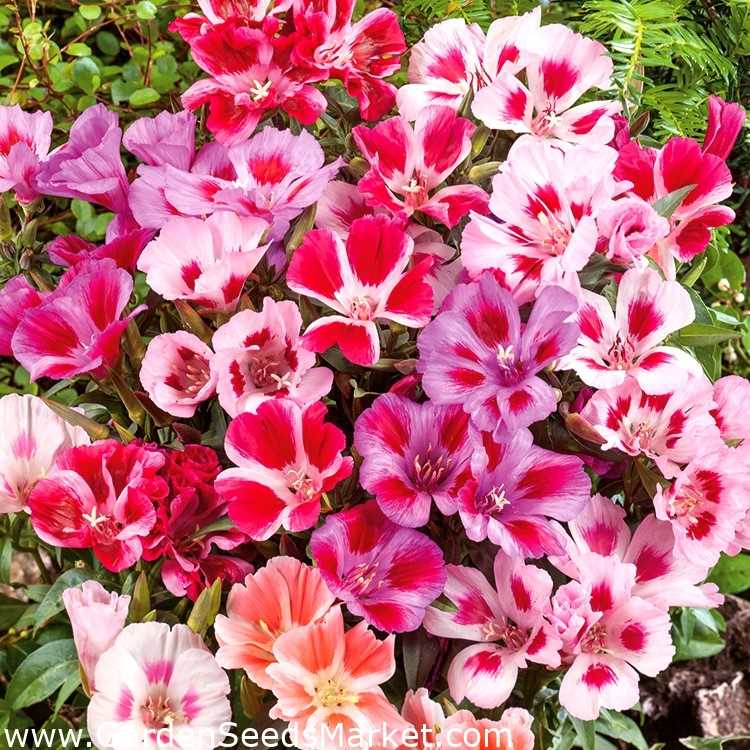

Godezia is a versatile and beautiful plant that can be grown as a bedding plant, in containers, or in hanging baskets. Here are some reasons why you should consider growing Godezia seedlings:
- Attractive flowers: Godezia produces vibrant and showy flowers in a range of colors, including pink, purple, red, and white. These flowers add color and beauty to any garden or outdoor space.
- Long blooming period: Godezia seedlings can flower continuously for several months, providing a long-lasting display of blooms. This makes them an excellent choice for adding color to your garden throughout the growing season.
- Drought tolerance: Godezia is a drought-tolerant plant, which means it can survive and thrive in dry conditions. This makes it a great choice for gardens with limited water availability or for those who prefer low-maintenance plants.
- Easy to grow: Godezia seedlings are relatively easy to grow, making them suitable for both experienced gardeners and beginners. They can be sown directly in the ground or started indoors and transplanted once the weather warms up.
- Attracts pollinators: The vibrant flowers of Godezia are a magnet for pollinators, such as bees and butterflies. By growing Godezia seedlings, you can create an inviting habitat for these important pollinators in your garden.
- Versatile plant: Godezia can be grown in various settings, including flowerbeds, borders, containers, and hanging baskets. Its compact and bushy growth habit makes it a great choice for adding color and interest to any garden or outdoor space.
Overall, growing Godezia seedlings can be a rewarding and enjoyable experience. Their attractive flowers, long blooming period, drought tolerance, ease of cultivation, and ability to attract pollinators make them a valuable addition to any garden or outdoor space.
Benefits of starting from seeds
- Cost-effective: Starting from seeds is a cost-effective way to grow Godezia seedlings. Compared to buying pre-grown seedlings, seeds are often less expensive and provide a larger quantity for a lower cost.
- Increased variety: When starting from seeds, you have access to a wider variety of Godezia cultivars. This allows you to choose the specific characteristics, such as color and size, that you prefer in your Godezia plants.
- Control over the growing process: By starting from seeds, you have complete control over the entire growing process. You can ensure that your seedlings receive the proper care and attention from the very beginning, leading to healthier and stronger plants.
- Opportunity for experimentation: Growing Godezia seedlings from seeds provides the opportunity for experimentation. You can try different techniques and methods to see what works best for your specific growing conditions and preferences.
- Satisfaction of nurturing the plants: There is a unique satisfaction that comes from starting a plant from a tiny seed and watching it grow into a beautiful and productive Godezia plant. Starting from seeds allows you to experience the entire life cycle of the plant, from its early stages to maturity.
- Environmentally friendly: Starting from seeds is an environmentally friendly option. It reduces the carbon footprint associated with transportation and packaging of pre-grown seedlings.
Choosing the Right Seeds for Godezia Seedlings
Godezia seedlings are a popular choice among gardeners due to their vibrant blooms and easy cultivation. However, choosing the right seeds is crucial to ensure healthy and thriving seedlings. Here are some factors to consider when selecting seeds for Godezia seedlings:
1. Varieties and Colors
Godezia seedlings come in a variety of colors, including shades of red, pink, orange, and yellow. Consider the color scheme of your garden or the specific aesthetic you are aiming for and choose the varieties accordingly. However, remember that different varieties may have different growing requirements, so make sure to research each variety before making a selection.
2. Germination Rate
The germination rate of the seeds refers to the percentage of seeds that will successfully sprout and grow into seedlings. Look for seeds with a high germination rate to ensure a higher chance of success. This information can usually be found on the seed packet or obtained from the seller or supplier.
3. Supplier Reputation
When purchasing seeds for Godezia seedlings, it’s important to buy from a reputable supplier. Reliable suppliers are more likely to provide high-quality seeds that are true to their variety and have been properly stored. Reading customer reviews or seeking recommendations from experienced gardeners can help you find trustworthy suppliers.
4. Organic or Hybrid Seeds
You may choose to grow Godezia seedlings from organic or hybrid seeds, depending on your preferences and gardening practices. Organic seeds are grown without the use of synthetic pesticides or fertilizers, while hybrid seeds are produced by cross-breeding different varieties to create specific traits. Consider the advantages and disadvantages of each type of seed before making a decision.
5. Seedling Characteristics
Consider the desired characteristics of the Godezia seedlings you want to grow. Some varieties may have a compact growth habit, making them suitable for containers or smaller gardens. Others may be more vigorous and require more space. Think about the available space in your garden and the overall design you have in mind when selecting seeds.
6. Climate Adaptability
Check whether the chosen varieties of Godezia seedlings are well-suited to your climate and growing conditions. Godezia seedlings are generally adaptable to diverse climates, but some varieties might prefer specific temperature ranges or soil types. Research the specific requirements of the selected varieties to ensure optimal growth and blooming.
By considering these factors and selecting the right seeds for Godezia seedlings, you can increase the chances of success in growing healthy and beautiful plants.
Selecting a Godezia Seed Variety
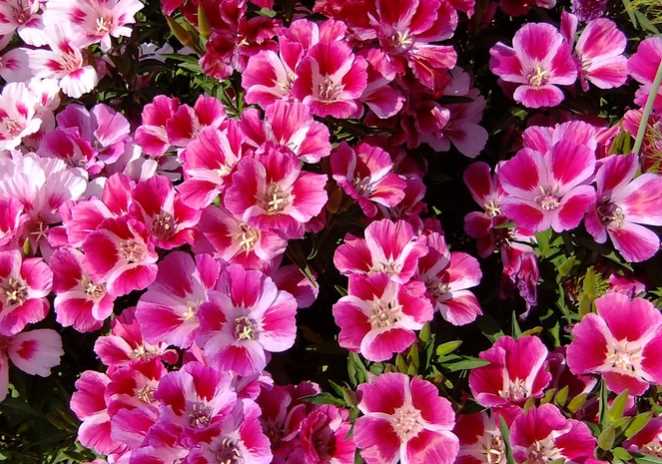

When it comes to selecting a Godezia seed variety, there are a few factors to consider. Different varieties of Godezia have different characteristics, such as size, color, and flavor. Here are some points to keep in mind when choosing a Godezia seed variety:
- Growth habit: Godezia plants can either be determinate or indeterminate. Determinate varieties grow to a certain height and then stop growing, while indeterminate varieties continue to grow and produce fruit throughout the season. Consider your available garden space and desired harvest window when deciding between determinate and indeterminate varieties.
- Size: Godezia fruit can range in size from small cherry tomatoes to large beefsteak tomatoes. Think about how you plan to use the fruit and choose a size that fits your needs. Smaller varieties are great for snacking and salads, while larger varieties are better for slicing and cooking.
- Color: Godezia fruit can come in a variety of colors, including red, yellow, orange, pink, purple, and green. Consider the visual appeal of the fruit and how it will fit in with your other garden plants when selecting a color.
- Flavor: Godezia fruit can have different flavor profiles, ranging from sweet to tangy to acidic. Consider your personal taste preferences and how you plan to use the fruit in your cooking when choosing a flavor.
- Maturity: Godezia varieties have different maturity dates, with some reaching maturity earlier in the season and others later. Take into account your local climate and growing season length to ensure you choose a variety that will have enough time to mature before the first frost.
With these considerations in mind, browse seed catalogs or visit your local garden center to find a Godezia variety that suits your preferences and growing conditions. Keep in mind that different varieties may require specific care and have different disease resistance, so be sure to read the seed packet or plant label for more information. Happy gardening!
Quality and Germination Rates
Godezia seeds are known for their high quality and germination rates. When purchasing seeds, it is important to choose reliable suppliers who provide good quality seeds. Look for seeds that are fresh and healthy-looking, with no signs of damage or disease.
The germination rate refers to the percentage of seeds that successfully sprout and develop into seedlings. Good quality Godezia seeds typically have a high germination rate, which means that a large percentage of the seeds will successfully germinate.
Factors affecting germination rates
While Godezia seeds have high germination rates, there are several factors that can affect the germination process:
- Temperature: Godezia seeds prefer warm temperatures to germinate. The ideal temperature range for germination is between 20-25 degrees Celsius.
- Moisture: Adequate moisture is essential for seed germination. The seeds should be moist but not soaked in water.
- Light: Godezia seeds do not require light for germination. In fact, they prefer to be in a dark environment during this stage.
- Soil quality: The soil should be well-draining and rich in organic matter. It should also have a pH level between 6.0 and 7.5.
Testing germination rates
If you want to determine the germination rate of your Godezia seeds, you can perform a simple germination test. Take a sample of seeds and place them on a damp paper towel or in a seedling tray filled with moist soil. Keep the seeds in a warm and dark location and monitor them for a certain period of time.
After a set number of days, count the number of seeds that have germinated and calculate the germination rate. This will give you an idea of the quality of your seeds and how many seedlings you can expect.
Conclusion
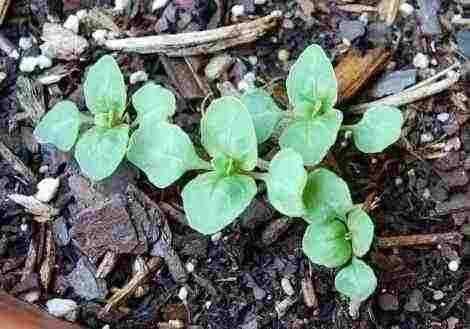

By selecting high-quality seeds and providing them with the optimal growing conditions, you can maximize the germination rate and success of your Godezia seedlings. Remember to store your seeds properly, in a cool and dry place, to maintain their viability.
Preparing the Soil for Godezia Seedlings
Proper soil preparation is essential for the successful growth of godezia seedlings. These steps will help create an optimal environment for your seedlings to thrive:
1. Choose a suitable location:
Select a sunny spot in your garden with well-draining soil. Godezia seedlings prefer full sun exposure for at least 6-8 hours a day.
2. Clear the area:
Remove any weeds, rocks, or debris from the selected planting area. Godezia seedlings are sensitive to competition and need space to grow without being hindered by other plants.
3. Test the soil:
Perform a soil test to determine its pH level and nutrient content. Godezia seedlings thrive best in slightly acidic soil with a pH range of 5.5-6.5. Adjust the pH levels if necessary using appropriate soil amendments.
4. Prepare the soil:
Loosen the soil to a depth of at least 8-10 inches using a garden fork or tiller. This will improve drainage and allow the young root system to penetrate easily. Remove any large clumps or stones that may impede root growth.
5. Amend the soil:
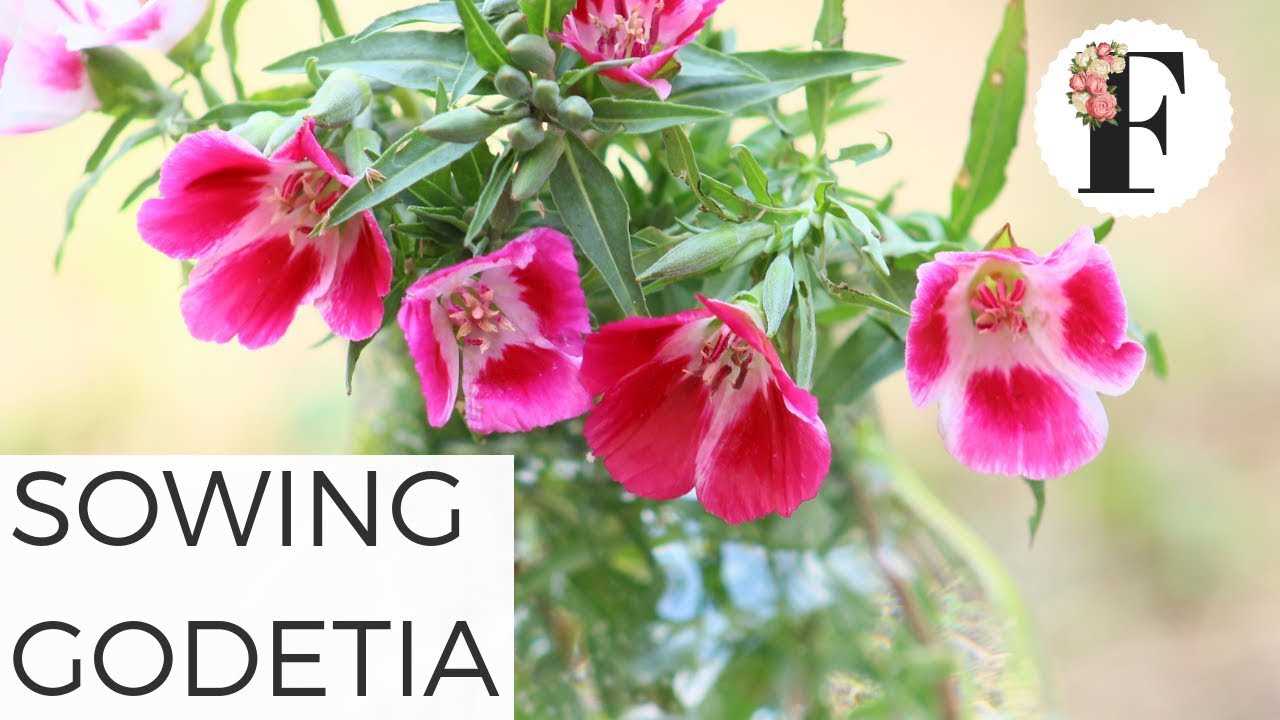

If your soil lacks organic matter, incorporate compost or well-rotted manure into the soil. This will improve soil structure, moisture retention, and provide essential nutrients for the seedlings.
6. Fertilize:
Apply a balanced fertilizer with a ratio of 10-10-10 or a slow-release organic fertilizer according to the package instructions. This will provide the necessary nutrients for the initial growth stage of the seedlings.
7. Mulch:
Spread a layer of organic mulch, such as straw or wood chips, around the seedlings. This will help retain moisture, suppress weed growth, and regulate soil temperature.
8. Water the soil:
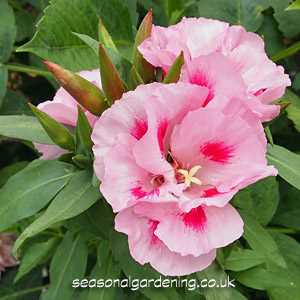

Water the soil thoroughly before planting the godezia seedlings. Moist soil will promote successful transplantation and reduce the chances of stress on the young plants.
By following these steps, you will create a favorable environment for godezia seedlings to establish and grow into healthy plants.
Soil conditions for optimal growth
For optimal growth of Godezia seedlings, it is important to provide them with the right soil conditions. Here are some key factors to consider when preparing the soil for sowing and transplanting Godezia seeds:
- Texture: Godezia seedlings prefer well-draining soil with a loamy texture. Loam soil that is rich in organic matter will provide a good balance of water retention and drainage.
- pH level: Godezia seedlings thrive in slightly acidic to neutral soil with a pH level between 6.0 and 7.0. Test the soil pH and adjust if necessary by adding lime to raise the pH or sulfur to lower it.
- Fertility: Godezia seedlings require fertile soil to support their growth. Prior to sowing or transplanting, amend the soil with compost or well-rotted manure to improve its fertility and provide essential nutrients.
- Moisture: While Godezia seedlings need adequate moisture, they cannot tolerate waterlogged soil. Ensure the soil is well-draining and does not become waterlogged, as this can lead to root rot and other diseases.
- Sunlight: Godezia seedlings thrive in full sunlight. Choose a location with at least 6-8 hours of direct sunlight per day for optimal growth.
It is recommended to prepare the soil well in advance before sowing or transplanting Godezia seeds. This allows enough time for any amendments to integrate and for the soil to settle.
By providing the right soil conditions, you can ensure the optimal growth and development of your Godezia seedlings, leading to healthy and vibrant plants.
Testing and amending the soil
Before sowing godezia seeds, it is important to test the soil to ensure it has the proper pH level and nutrients necessary for healthy seedling growth. You can purchase a soil testing kit from a garden center or send a sample to a laboratory for analysis.
Soil testing
To perform a soil test, follow these steps:
- Choose a representative area of your garden where you plan to sow the godezia seeds.
- Using a trowel or shovel, dig a small hole that is about 6-8 inches deep.
- Take a small sample of soil from various locations within the hole and place it in a clean container.
- Repeat the process in different areas of your garden to collect multiple samples.
- Mix the soil samples together and remove any debris or rocks.
- Allow the soil to dry completely before sending it for testing. This will prevent any moisture-related inaccuracies.
- Follow the instructions provided with the soil testing kit or laboratory sample submission form to send your soil sample.
- Once you receive the results, analyze the pH level and nutrient deficiencies or imbalances.
Amending the soil
Based on the soil test results, you may need to amend the soil to create an optimal growing environment for your godezia seedlings. Some common soil amendments include:
- Adding organic matter such as compost or well-rotted manure to improve soil structure and fertility.
- Adjusting the pH level by adding lime to raise pH or sulfur to lower pH, if necessary.
- Applying specific fertilizers or soil additives to correct nutrient deficiencies or imbalances.
It is important to follow the recommended rates and application methods for any soil amendments to avoid overloading the soil with nutrients or causing harm to the seedlings. Consulting with a local agricultural extension service or garden expert can provide guidance on the appropriate amendments for your specific soil conditions.
After amending the soil, mix the amendments thoroughly to ensure an even distribution. Allow the soil to settle for a few days before sowing the godezia seeds.
Sowing Godezia Seeds
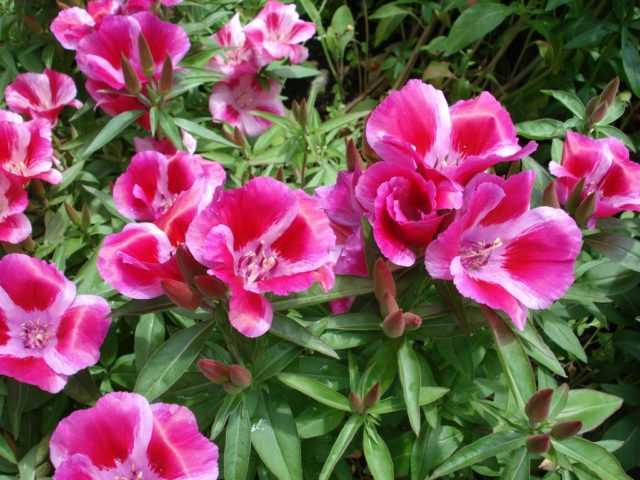

Godezia seeds are typically sown indoors, about 8-10 weeks before the last frost date in your area. This allows the seedlings to grow and mature before they are transplanted outdoors.
Here is a step-by-step guide on how to sow Godezia seeds:
- Choose a container: Use seed trays or small pots with drainage holes to sow the Godezia seeds. Make sure the containers are clean and sterilized to prevent disease.
- Prepare the soil: Fill the containers with a well-draining seed starting mix. It is important to use a light and fertile soil mix for Godezia seeds.
- Sow the seeds: Sprinkle the Godezia seeds evenly over the soil surface. Do not bury the seeds, as they require light to germinate.
- Cover the seeds: Gently press the seeds down into the soil using the back of a spoon or your fingertips. Then, cover the seeds with a thin layer of the seed starting mix.
- Moisten the soil: Use a spray bottle or a watering can with a fine spout to moisten the soil. Be careful not to overwater, as excessive moisture can lead to rotting.
- Provide the right growing conditions: Place the containers in a warm and bright location, such as a greenhouse or a sunny windowsill. Godezia seeds need a temperature of around 70-75°F (21-24°C) to germinate.
- Keep the soil moist: Check the moisture level of the soil regularly and water as needed to keep it consistently moist, but not waterlogged.
- Be patient: Godezia seeds usually take about 7-14 days to germinate. Keep an eye on the containers and be patient during this time.
- Thin out the seedlings: Once the Godezia seedlings have developed their second set of leaves, thin them out to leave only the strongest ones. This will ensure that each seedling has enough space to grow.
By following these steps, you can successfully sow Godezia seeds and get healthy and vigorous seedlings ready for transplanting outdoors.
Best time to sow Godezia seeds
Godezia seeds should be sown during the spring or early summer months. The ideal time to start sowing Godezia seeds is typically in April or May, when the weather is starting to warm up and the risk of frost has passed.
It is important to consider the specific variety of Godezia that you are planting, as different varieties may have slightly different optimal sowing times. However, in general, sowing Godezia seeds in the spring allows them to establish strong root systems and grow into healthy seedlings before the summer heat arrives.
Godezia seeds can be sown directly into the ground or started indoors and transplanted later on. Sowing directly into the ground is a simple and straightforward method, but starting seeds indoors can give you a head start and ensure successful germination.
Before sowing Godezia seeds, prepare the soil by removing any weeds and loosening the top layer. Godezia plants prefer well-draining soil, so make sure the soil has good drainage. You can also amend the soil with organic matter or compost to improve fertility.
When sowing Godezia seeds, follow the recommended spacing for your specific variety. Plant the seeds at a depth of about 1/4 inch and cover them lightly with soil. Water the soil gently to keep it moist but not waterlogged.
Once the seeds have germinated and the seedlings have developed a few true leaves, you can thin them out if necessary. This will give the remaining seedlings more space and resources to grow.
Overall, the best time to sow Godezia seeds is in the spring when the weather is warming up. By following the appropriate sowing techniques and caring for the seedlings, you can ensure the successful growth and development of your Godezia plants.
Questions and Answers:
When is the best time to sow godezia seeds?
The best time to sow godezia seeds is in the early spring, around March or April.
How should I prepare the soil for sowing godezia seeds?
You should prepare the soil by mixing in organic matter and ensuring it is well-drained. Godezia prefers fertile soil.
Can I sow godezia seeds directly in the garden?
Yes, you can sow godezia seeds directly in the garden. However, starting them indoors and transplanting the seedlings may yield better results.
How deep should I sow the godezia seeds?
You should sow the godezia seeds at a depth of about 1/4 inch (6 mm).
How long does it take for godezia seedlings to germinate?
Godezia seedlings typically take around 1 to 3 weeks to germinate.
When can I transplant the godezia seedlings into the garden?
You can transplant the godezia seedlings into the garden when they have developed 2 to 4 true leaves, usually after about 6 to 8 weeks.







